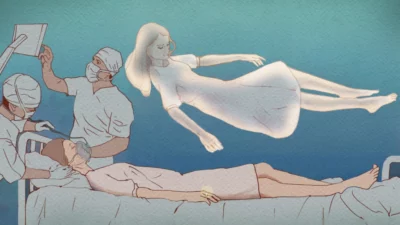
Saint Petersburg: Tradition of Buddhist Art Still Alive

Art which has been hidden in a Buddhist temple in Nepal for ages is presented today by Lok Chitrakar, an artist from Katmandu. 110 canvases of ritual art and more than 70 sculptures are now on exhibit in one of Saint Petersburg’s cultural centers.
All of the exhibits are a master and his pupils’ works, in the Newar Paubha technique.
The main topic for Paubha paintings are Buddhist and Hindu deities.
All the canvases are made from cotton. The paints are traditionally made from crushed stones and vegetable dye.
Here’s a famous Buddhist story. Buddha Shakyamuni under the bodhi tree at the moment of his Enlightenment.
Many such stories have never left temples before.
[Lok Chitrakar, Artist]:
“Newar Paubha is a very tantric painting and sacred. It needs a secret, because people do not understand that this is all symbolic meaning.”
The main color used in Paubha paintings is red because it enhances peoples‘ senses. Blue, green and gold are used to accent the details.
Only artists of the Newari ethnic group from Katmandu valley can train in this school of painting. Usually a master passes his knowledge to his pupil. If done right, the painting can last for a very long time.
[Nadezhda Neupokoyeva, Exhibition Coordinator]:
“We know one Paubha of 18th century, which still maintains its colors. So, all the works here are going to survive our generation and the next several generations.”
Visitors are enjoying the exhibition.
[Boris Nevzorov, Visitor of the Exhibition]:
“We sensed the spirit of the East and remembered our youth. When we were young we lived in China for 10 years.”
One can also learn Paubha painting techniques at the master-classes organized by Lok Chitrakar and his pupil Renuka Gurung. Each visitor can paint his own Newar art.
NTD, Saint Petersburg, Russia
 Foto: NTDTV
Foto: NTDTV



























vielen Dank, dass Sie unseren Kommentar-Bereich nutzen.
Bitte verzichten Sie auf Unterstellungen, Schimpfworte, aggressive Formulierungen und Werbe-Links. Solche Kommentare werden wir nicht veröffentlichen. Dies umfasst ebenso abschweifende Kommentare, die keinen konkreten Bezug zum jeweiligen Artikel haben. Viele Kommentare waren bisher schon anregend und auf die Themen bezogen. Wir bitten Sie um eine Qualität, die den Artikeln entspricht, so haben wir alle etwas davon.
Da wir die Verantwortung für jeden veröffentlichten Kommentar tragen, geben wir Kommentare erst nach einer Prüfung frei. Je nach Aufkommen kann es deswegen zu zeitlichen Verzögerungen kommen.
Ihre Epoch Times - Redaktion